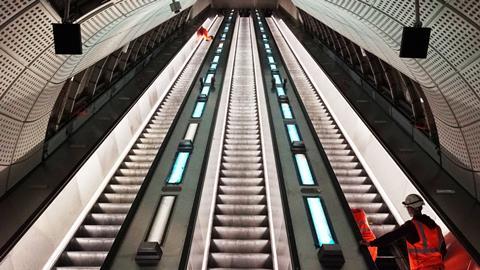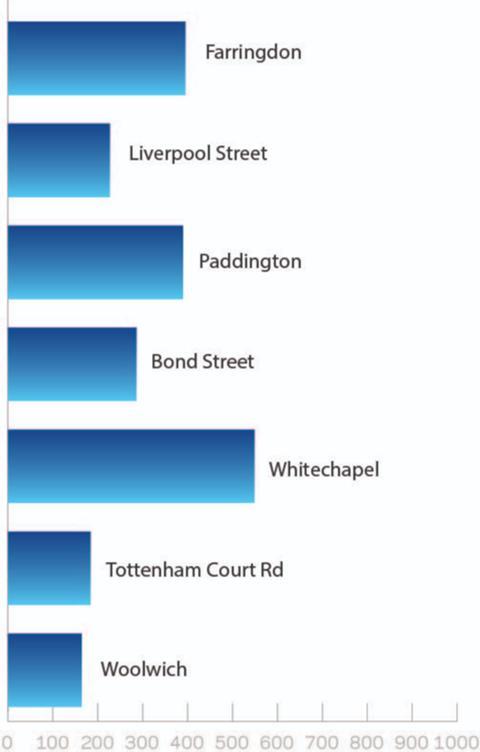National Audit Office report also reveals Crossrail has spent ┬Ż936m on ŌĆścompensation eventsŌĆÖ

The expected cost of finishing seven Crossrail stations has increased by more than ┬Ż2bn, a National Audit Office report has found.
The report, Completing Crossrail, revealed that the forecast cost of the main civils packages had more than doubled at Farringdon, Liverpool Street, Paddington, Bond Street, Whitechapel, Tottenham Court Road and Woolwich stations between when the contracts were awarded and December last year.
Bond Street station, which is being built by a Costain Skanska JV, has been considered the most problematic job ŌĆō unlike the rest of the line it is not guaranteed to open in by March 2021 - but is not where forecast costs have increased most.
At Whitechapel station the forecast cost has increased from ┬Ż110m when a joint venture made up of Balfour Beatty, Morgan Sindall and Vinci was appointed in January 2011 to ┬Ż659m as of December 2018 - an increase of ┬Ż549m or 499%. Costs at Bond Street are predicted to increase from ┬Ż126m to ┬Ż412m - an increase of 227%.
READ MORE: How the Crossrail delay has unfolded
READ MORE: Crossrail boss reveals tunnelling to blame for Bond Street delays
An extra ┬Ż395m is forecast to be spent on Farringdon, while costs at Paddington have been predicted to increase by ┬Ż390m.
Costs are expected to increase by ┬Ż227m at Liverpool Street, ┬Ż184m Tottenham Court Road and ┬Ż164m at Woolwich station.
According to the report the biggest category of overspend over the whole project has been commercial settlement where Crossrail has been forced to hand out ┬Ż936m - and most of this sum (┬Ż788m) was paid out in 2015-16.
The NAO described these payments as "settlement of commercial 'compensation events' due to, for example, delays to contractors' planned start dates".
The public spending watchdog said Crossrail's contract strategy and construction programme had led to it taking on significant risk.
Explaining where it all went wrong for the project the NAO said: ŌĆ£A compressed schedule, the contractual model, the loss of downward pressure on costs, and the absence of an achievable plan were set against an atmosphere where 'can do' became unrealistic.ŌĆØ
It blamed Crossrail Ltd and joint sponsors, Department for Transport and Transport for London (TfL), for allowing the programme to be ŌĆ£dominated by a fixed completion date of December 2018ŌĆØ, a date which drove the decision-making and meant multiple activities had to run in parallel.
The report also criticised Crossrail for not producing a ŌĆ£sufficiently detailed delivery plan [ŌĆ”] until late 2018ŌĆØ, even though problems had started to emerge by 2015.
Amyas Morse, the head of the NAO, said: ŌĆ£Throughout delivery, and even as pressures mounted, Crossrail Ltd clung to the unrealistic view that it could complete the programme to the original timetable, which has had damaging consequences.
ŌĆ£While we cannot make an overall assessment of value for money until Crossrail is complete, there have been a number of choices made in the course of this project that have clearly damaged public value.ŌĆØ
Morse said the Department for Transport and Transport for London, needed to support the new Crossrail executive team led by chief executive Mark Wild to get the project finished "without unrealistic cost or time expectations".
Increases in forecast cost of CrossrailŌĆÖs central stations (┬Żm)

The difference between target price at award and forecast cost at December 2018



























No comments yet